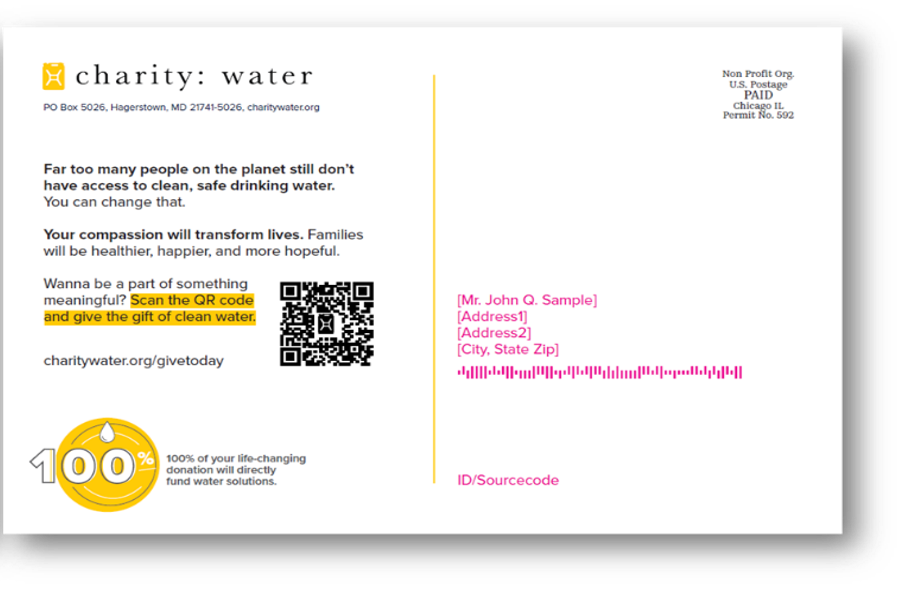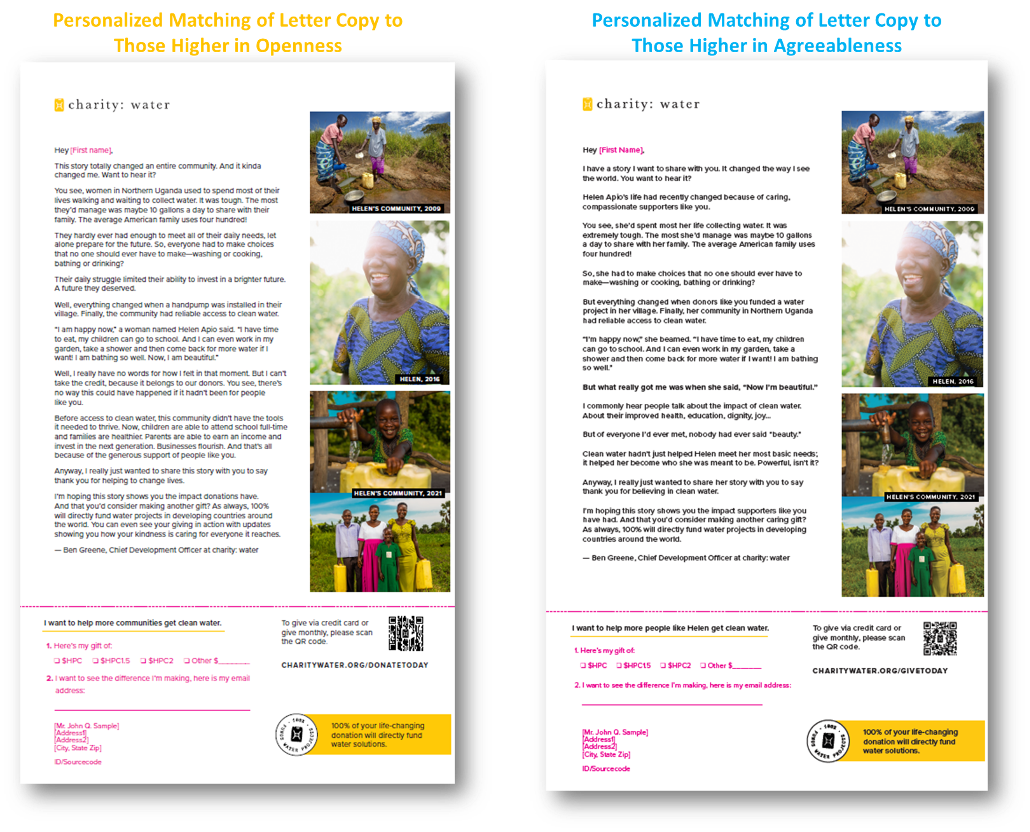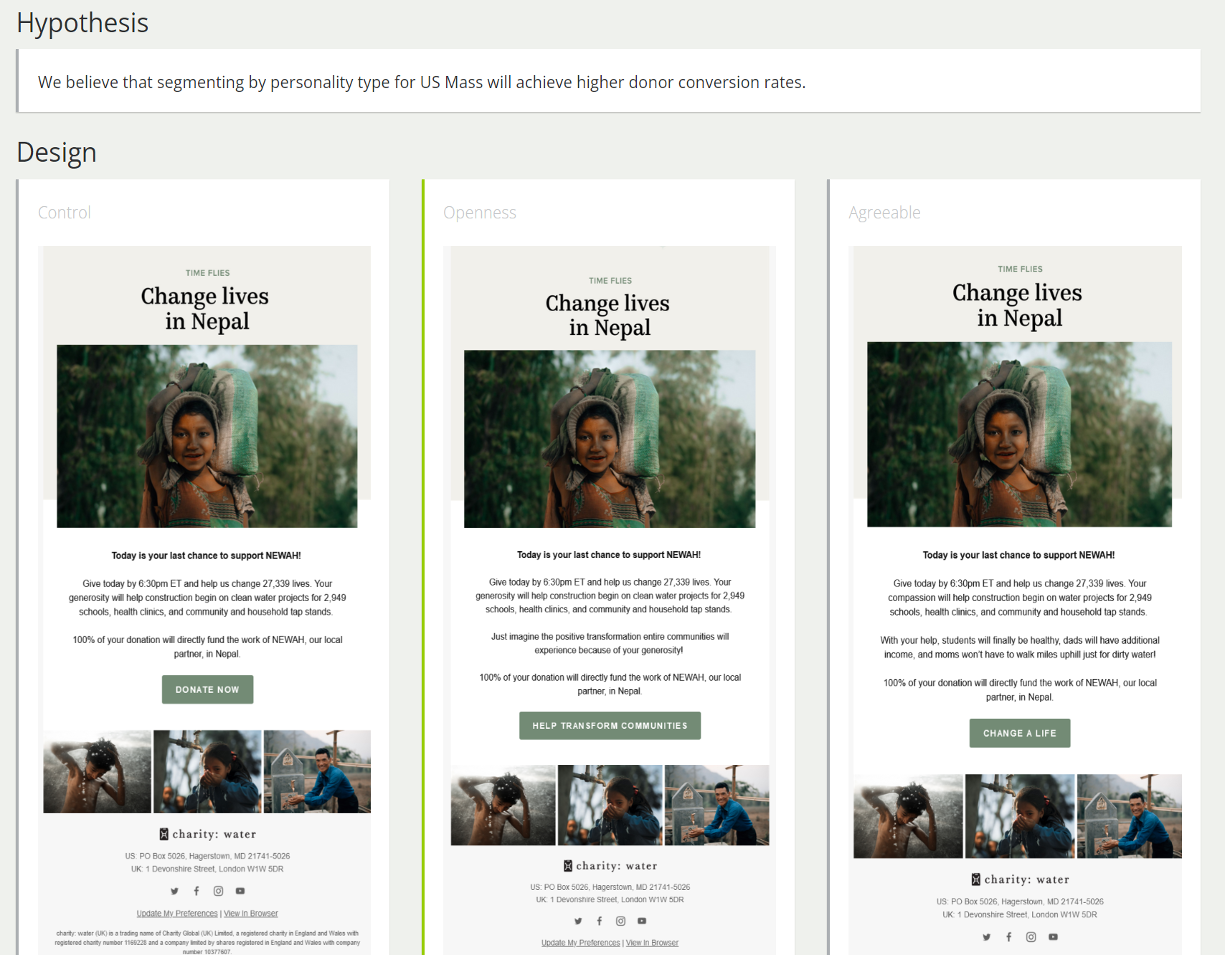We did some very cool direct mail testing with charity: water. They’ve agreed to let us publish the results. Some things worked, others didn’t. We’ll share it all. This will be a two-part post but worth the ride and we’ll also combine both posts into a downloadable, single pdf for ease of future reference.
charity: water is a brand that screams innovation. They aren’t alone in that category but they fit squarely in it. For starters, they signup a ton of monthly donors from a long-form video posted on social and digital ad networks.
And they don’t use direct mail. Ah, the horror! No, it’s a rational choice. Equally rational is their interest in testing the value of direct mail, but not simply as a stand-alone, fulfillment route. They wanted a brand-building, tactile touchpoint adding to engagement and overall value.
And they didn’t want to treat everyone the same. They wanted personalized matching with behavioral science.
Let’s parse that mouthful out a bit.
Brand-building: If you think your direct mail isn’t building your brand and that isn’t its primary job then you should not be in the direct mail business. How so? The vast majority of people getting your direct mail don’t respond to it. Does that mean it had no value for the 95% +? It had an impact. It either made those people more or less likely to give in the future and since that’s the massive majority, the impact on that group matters more than the tiny responder group. It builds or destroys donor level equity, which is their future value. That is the sane definition of brand, building future value.
Not in vacuum: What if a mailing has hardly anyone sending back a paper check? Did it bomb? In most cases, the analysis would say “yes”, bombed. But what if you had an extended view that looked at the possible influence of that mail touchpoint on other fulfillment channels, namely digital?
Not everyone is the same. It’s the norm for 99% of sector testing and fundraising to assume everyone is the same. charity: water is not the norm and needed an approach to personalized matching with rigor and evidence behind it.
Here is the experimental design.






